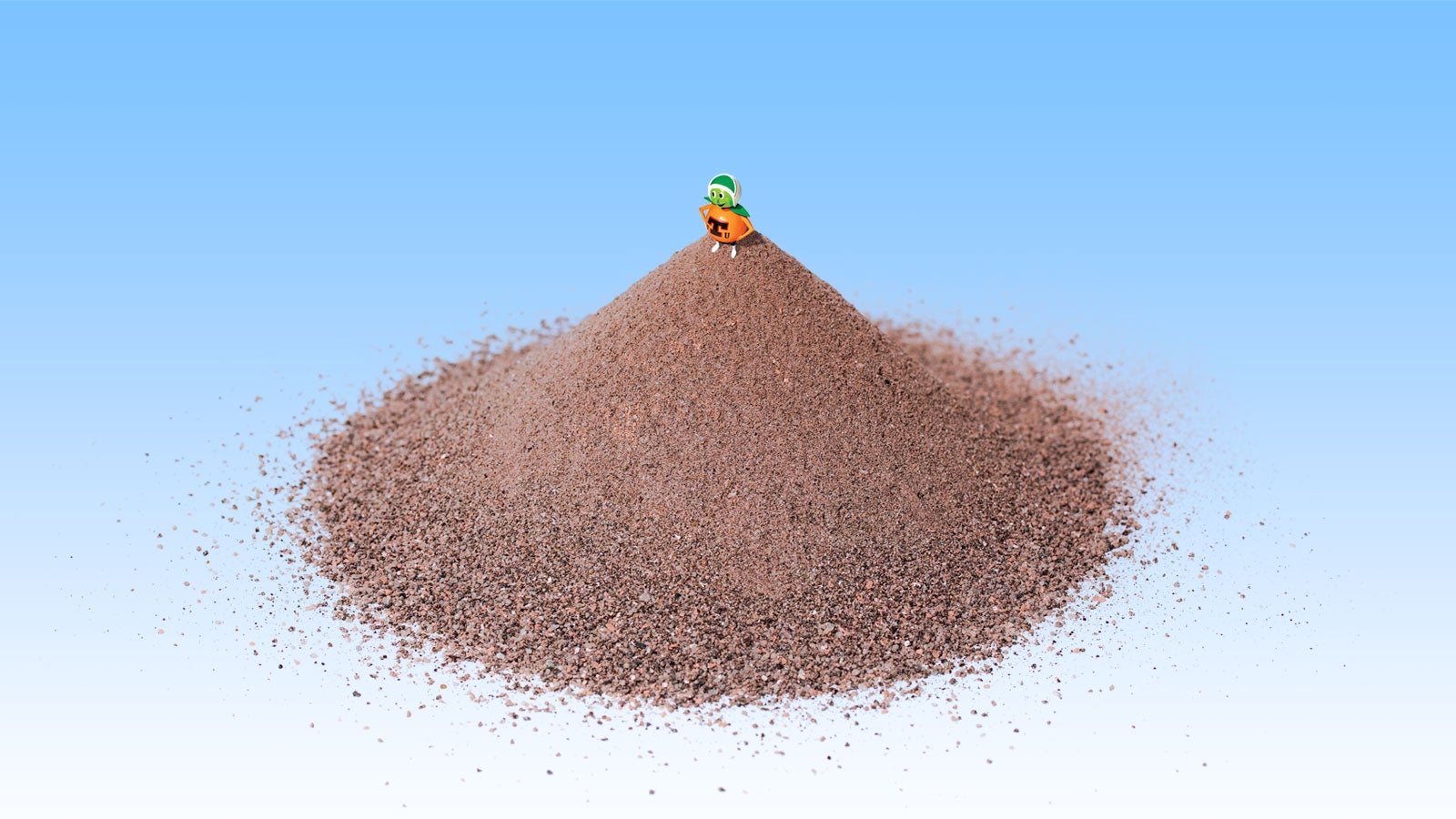
Making Synthetic Martian Dirt
Spring 2019 | By Bree Watson ’04
Imagine a big, metal machine, similar to a food processor. But instead of shredding cabbage for coleslaw or pureeing chickpeas for hummus, it’s pulverizing rocks and minerals to make out-of-this-world dirt.
This is a familiar scene for Kevin Cannon, a researcher who founded the nonprofit Exolith Lab, an extension of UCF’s Center for Lunar and Asteroid Surface Science. Cannon and his team of undergraduate students crush, sieve and carefully combine pure minerals to create research-grade simulants that replicate the physical, chemical and spectral makeup of soil on the moon, Mars and asteroids.
“Before humans ever set foot on Mars, scientists need to perform a lot of experiments,” says Cannon. “We need Martian soil to do that.” Even though NASA has landed multiple rovers on our neighbor planet, they are years away from ferrying even a small amount of material back to Earth. In the meantime, researchers prefer to use soil simulants like those made by Exolith Lab because they can be produced in large quantities with consistency.
Here’s the scoop on Mars simulant:
Not-so-secret Recipe
Mars Global Simulant (MGS-1) is made up of 11 minerals and non-crystal materials, including plagioclase and basaltic glass. Small amounts of ferrihydrite and hematite provide the soil’s signature reddish hue. The team recently returned from a trip to Montana, where they gathered more than two tons of pure silicate rock from the Stillwater Mine.
Analyze This
NASA’s Curiosity rover, which landed on Mars in 2012, used X-ray technology to analyze soil samples taken from the Rocknest site in the Gale crater. This is the basis for Cannon and team’s MGS-1 recipe.
Organic Matters
“A lot of [researchers] are interested in plant growth,” says Cannon. “And it turns out if you try to grow plants with just the default simulant [that we produce], they will not grow. There’s no organic carbon, no nutrients. And the particle size is too coarse — like sand.” Cannon says that to be able to grow plants, the soil will likely need to be sifted and supplemented, perhaps with clay found on a different part of Mars or enriched with help from common earthworms.
Building Blocks
“There’s also a lot of interest in making building material,” says Cannon. Researchers are developing 3D printers that use simulants as ink to create bricks, tools and other objects. Other engineers are using a high-pressure hammer to smash the simulant and form small but strong blocks that do not require a binding agent.
A Ton of Interest
At $20 per kilogram of MGS-1, the price is within reach for fans of the red planet — however, the simulated interstellar soil is only available to space agencies and other researchers. To date, the largest request for Mars and lunar simulants has been for 1,000 pounds, which was ordered by NASA.